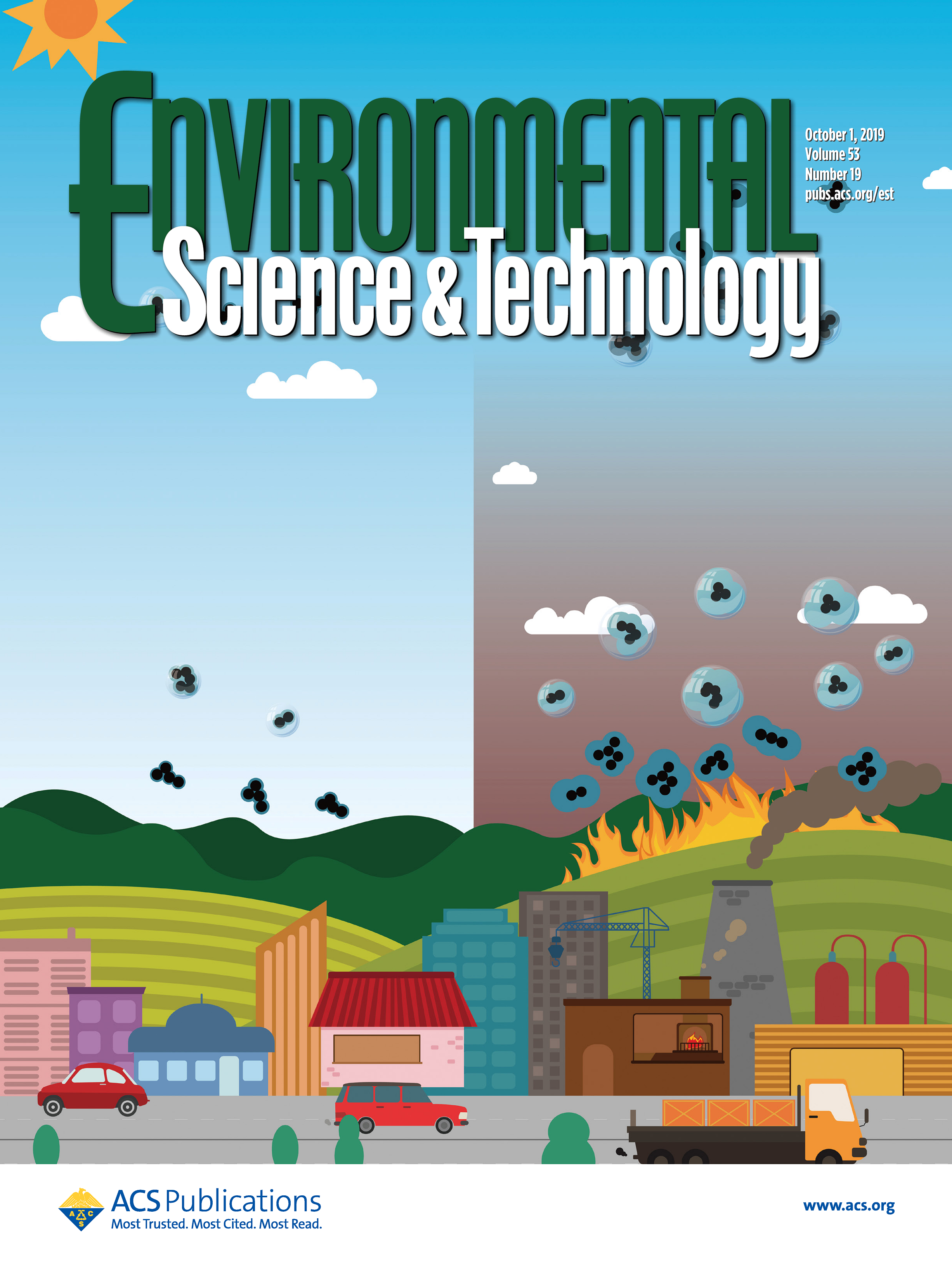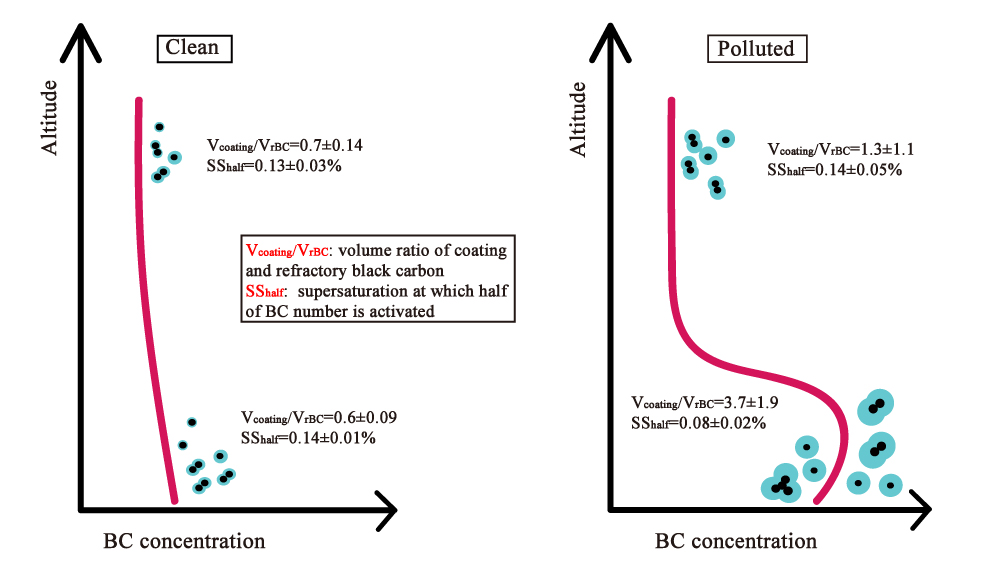Editor: 邵丹蕾 Author: DING Shuo Time: 2019-09-02 Number of visits :205
The study Size-Related Physical Properties of Black Carbon in the Lower Atmosphere over Beijing and Europe by Dantong Liu’s group was recently published in the journal Environmental Science & Technology (NI, IF=7.1) and it was selected as a cover art of the issue.

Figure 1. The cover art of EST for the article
Black carbon (BC), the component of carbonaceous aerosols from incomplete combustion, is strongly absorbing in the visible and near‐infrared, which has an important radiative impact on regional and global scales. This alters the atmospheric thermodynamics by its heating effects, especially in geographical hotspots that experience large emissions from anthropogenic or biomass burning sources. Although the mass concentration of BC has been widely measured globally, there is still a lack of measurements of the BC size distribution in both horizontal and vertical directions. The uncertainties in modeling BC mass loadings could largely result from the unresolved size distributions of BC. Furthermore, incorporation of the mixing state information of BC at different sizes into models could improve the realistic treatments of BC in terms of radiative effects and cloud condensation nuclei (CCN) activity.
In this paper, aircraft measurement was used to investigate the physical properties of BC aerosols, including size distribution, mixing state, optical properties, hygroscopicity etc. in cold and warm seasons under different pollution conditions over Beijing region, also compared with those measured in a Europe campaign in 2008.
It is reported that BC mass loadings over Europe is equivalent to that in the clean background of Beijing. In Beijing, due to the extra heating activities in cold season, the size of BC is significantly larger than warm season. When under polluted conditions, the BC coatings markedly increased, greatly affecting the optical properties and hygroscopicity of BC. The results show that the absorption enhancement of BC under heavy pollution condition can reach 1.9; meanwhile, the higher coatings effectively reduced the supersaturation required for BC to be activated as CCN. In polluted Beijing at predicted supersaturations of∼0.08% half of the BC number could be activated, whereas the cleaner environment needs ∼0.14%. The results here suggest that the highly coated and absorbing BC can be efficiently incorporated into clouds and can exert important direct and indirect radiative impacts over the polluted East Asia region.

Figure 2. The graphic illustration of this article
The first author of this study is Shuo Ding, PhD student, and the corresponding author is Dantong Liu. This work was supported by the National Key Research and Development Program of China and the National Natural Science Foundation of China.
Shuo Ding, Dantong Liu, Delong Zhao, Kang Hu, Ping Tian, Wei Zhou, Mengyu Huang, Yan Yang, Fei Wang, Jiujiang Sheng, Quan Liu, Shaofei Kong, Pengyi Cui, Yuandong Huang, Hui He, Hugh Coe, and Deping Ding. Size-Related Physical Properties of Black Carbon in the Lower Atmosphere over Beijing and Europe, Environmental Science & Technology, 2019, 53 (19), 11112-11121.
